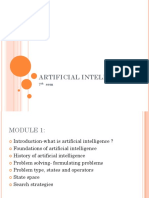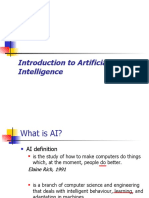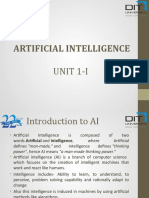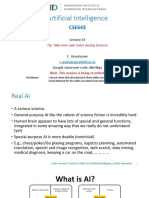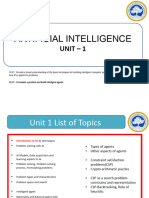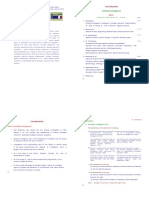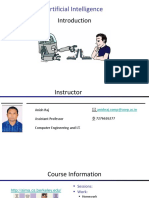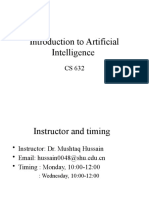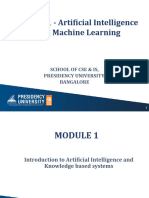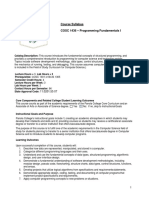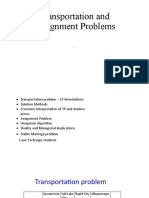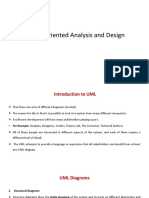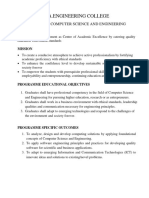0% found this document useful (0 votes)
56 views48 pagesChapter 1 Introduction To AI
This document provides an introduction to artificial intelligence presented by Mrs. Anagha Patil. It discusses the objectives and applications of AI, defines key concepts like intelligent agents, and covers topics such as knowledge representation, heuristic search, AI programming languages and tools, and AI hardware. It also examines intelligent agent structures and types, and sub-areas of AI like machine learning, neural networks, and genetic algorithms.
Uploaded by
rahul.s221054101Copyright
© © All Rights Reserved
We take content rights seriously. If you suspect this is your content, claim it here.
Available Formats
Download as PDF, TXT or read online on Scribd
0% found this document useful (0 votes)
56 views48 pagesChapter 1 Introduction To AI
This document provides an introduction to artificial intelligence presented by Mrs. Anagha Patil. It discusses the objectives and applications of AI, defines key concepts like intelligent agents, and covers topics such as knowledge representation, heuristic search, AI programming languages and tools, and AI hardware. It also examines intelligent agent structures and types, and sub-areas of AI like machine learning, neural networks, and genetic algorithms.
Uploaded by
rahul.s221054101Copyright
© © All Rights Reserved
We take content rights seriously. If you suspect this is your content, claim it here.
Available Formats
Download as PDF, TXT or read online on Scribd
/ 48













